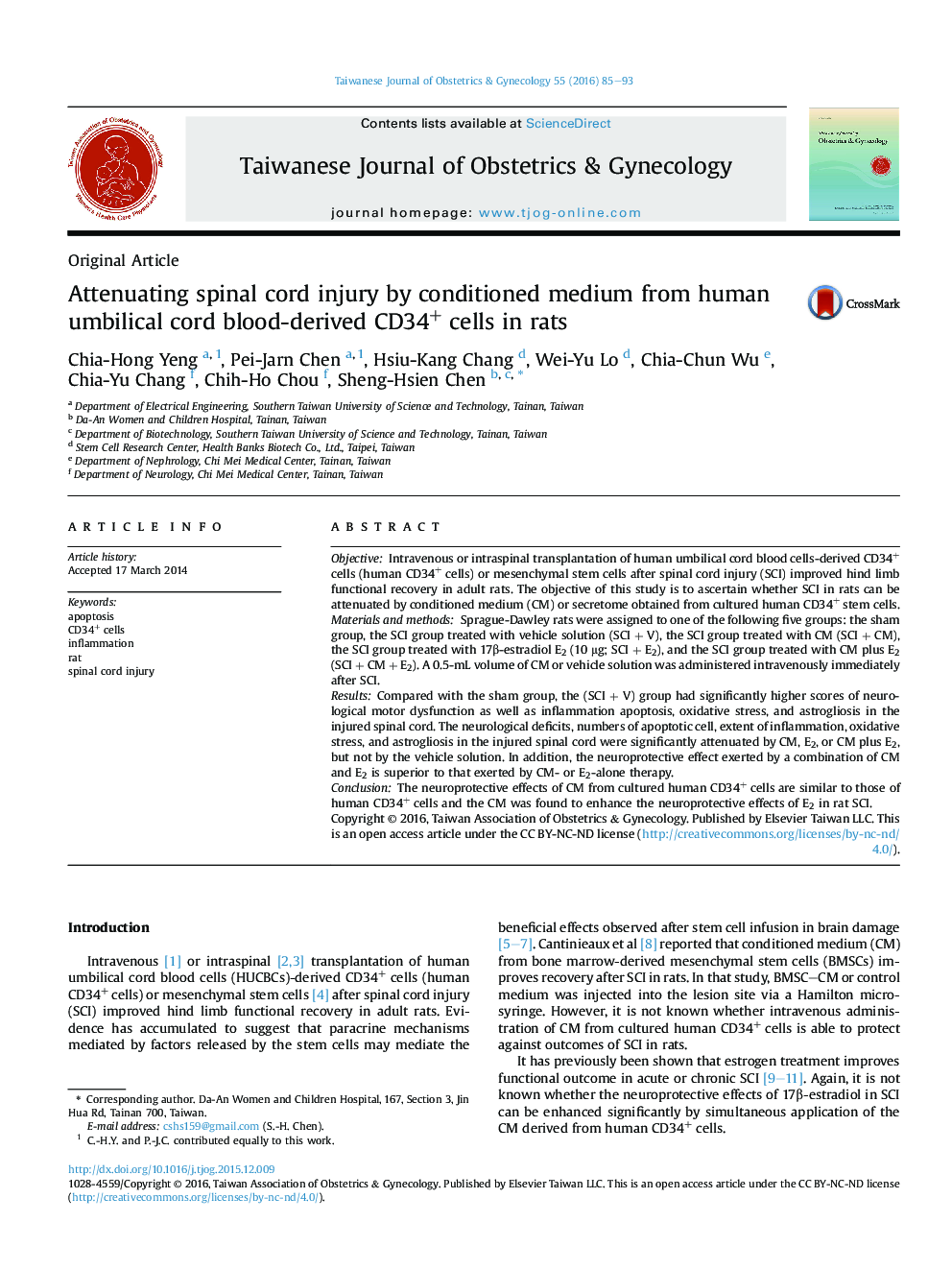| Article ID | Journal | Published Year | Pages | File Type |
|---|---|---|---|---|
| 3975021 | Taiwanese Journal of Obstetrics and Gynecology | 2016 | 9 Pages |
ObjectiveIntravenous or intraspinal transplantation of human umbilical cord blood cells-derived CD34+ cells (human CD34+ cells) or mesenchymal stem cells after spinal cord injury (SCI) improved hind limb functional recovery in adult rats. The objective of this study is to ascertain whether SCI in rats can be attenuated by conditioned medium (CM) or secretome obtained from cultured human CD34+ stem cells.Materials and methodsSprague-Dawley rats were assigned to one of the following five groups: the sham group, the SCI group treated with vehicle solution (SCI + V), the SCI group treated with CM (SCI + CM), the SCI group treated with 17β-estradiol E2 (10 μg; SCI + E2), and the SCI group treated with CM plus E2 (SCI + CM + E2). A 0.5-mL volume of CM or vehicle solution was administered intravenously immediately after SCI.ResultsCompared with the sham group, the (SCI + V) group had significantly higher scores of neurological motor dysfunction as well as inflammation apoptosis, oxidative stress, and astrogliosis in the injured spinal cord. The neurological deficits, numbers of apoptotic cell, extent of inflammation, oxidative stress, and astrogliosis in the injured spinal cord were significantly attenuated by CM, E2, or CM plus E2, but not by the vehicle solution. In addition, the neuroprotective effect exerted by a combination of CM and E2 is superior to that exerted by CM- or E2-alone therapy.ConclusionThe neuroprotective effects of CM from cultured human CD34+ cells are similar to those of human CD34+ cells and the CM was found to enhance the neuroprotective effects of E2 in rat SCI.
